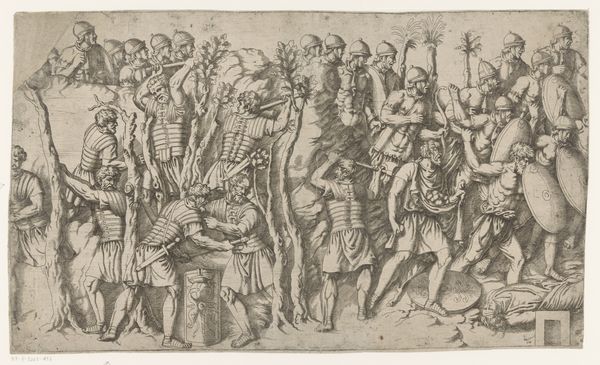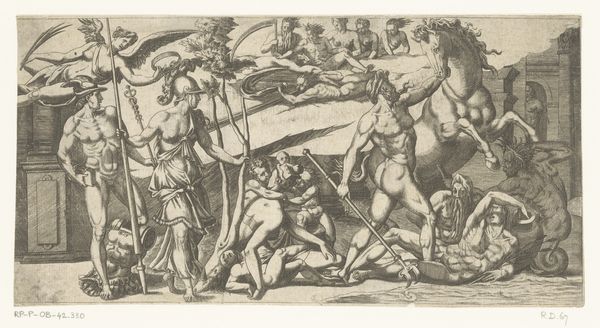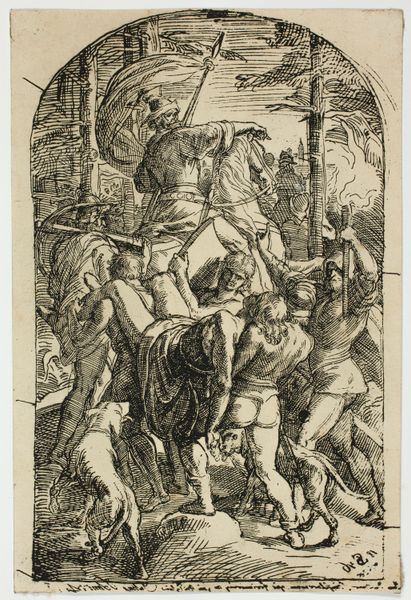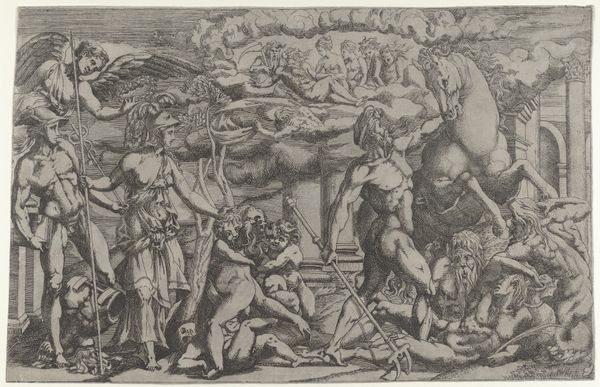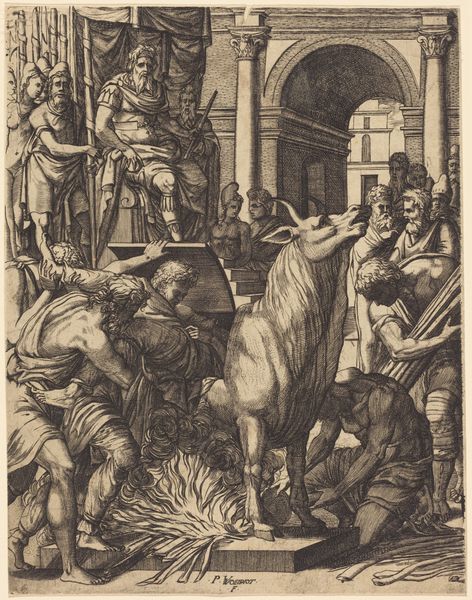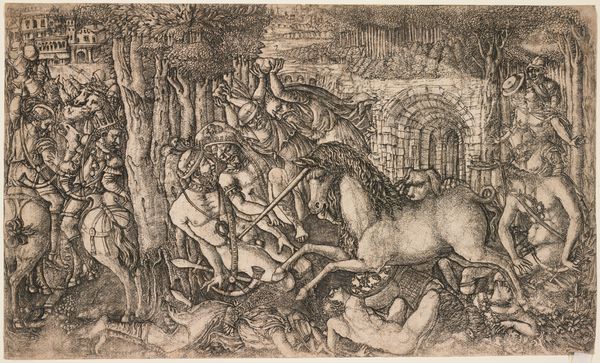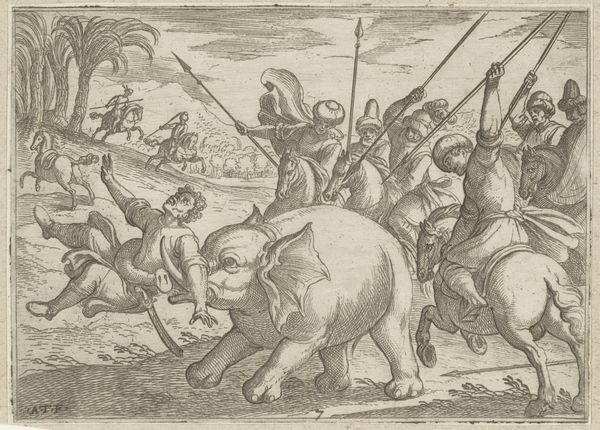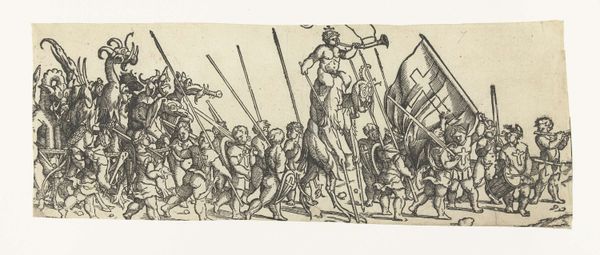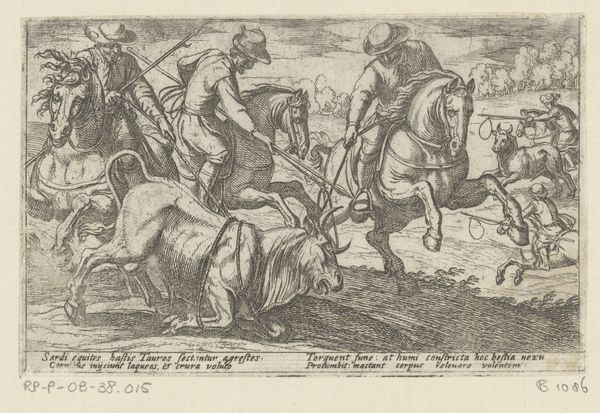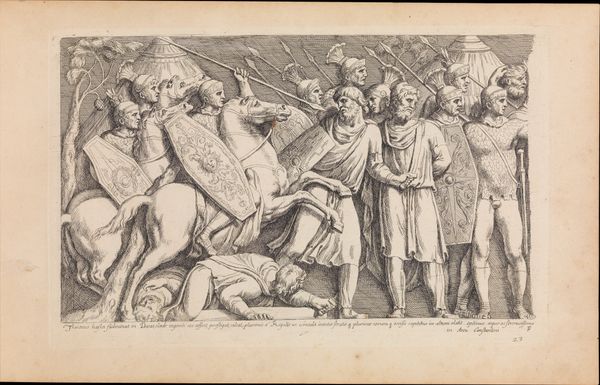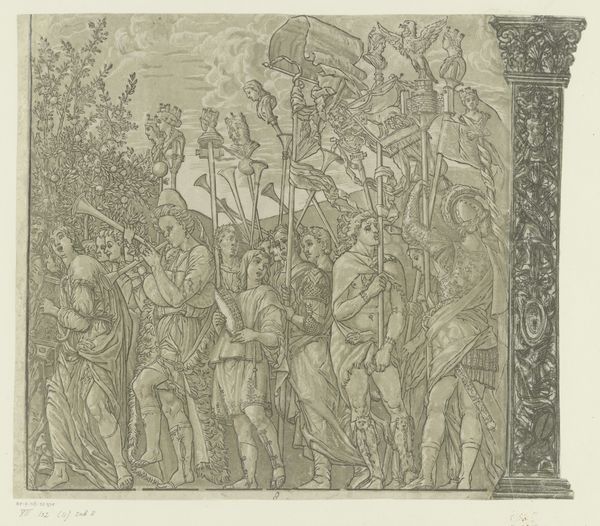
Trajan Fighting the Dacians; Trajan on horseback at right riding towards a group of soldiers at left and trampling two men 1515 - 1600
0:00
0:00
drawing, print, engraving
#
drawing
# print
#
figuration
#
romanesque
#
soldier
#
horse
#
men
#
history-painting
#
engraving
Dimensions: Sheet (Trimmed): 3 1/4 × 5 1/16 in. (8.3 × 12.8 cm)
Copyright: Public Domain
Editor: This engraving, "Trajan Fighting the Dacians," made sometime between 1515 and 1600 by an anonymous artist, depicts a Roman battle scene. It feels incredibly dense and active; the soldiers are packed together, creating this sense of overwhelming force. What symbolic readings can we draw from its imagery? Curator: Well, let’s begin with Trajan himself. Note the deliberate placement of the horse's hooves, trampling those beneath. It’s a visual shorthand for dominance, echoing the classical motif of the triumphant leader, but consider *how* it's being presented. Editor: It seems quite brutal, a very literal representation of conquest. Curator: Indeed. Conquest wasn't merely territorial; it was a psychological imposition. The Romans aimed to establish their cultural imprint through imposing displays of power. But tell me, what other elements stand out regarding how cultural memory is shaped here? Editor: The repetition of the soldier figure, almost like a pattern… it suggests uniformity, strength in numbers. And the artist seems less interested in individual identity, wouldn't you say? Curator: Precisely. Individual identity is submerged beneath the symbolic weight of Roman power. The standardized image reinforces a concept, not necessarily a historical reality, emphasizing collective might. Consider the long-term psychological impact of such repeated images – what memories are perpetuated? Editor: So it's less about the specific battle, and more about creating a lasting image of Roman authority and power through its visual symbols. It makes you think about what symbols *we* perpetuate today and what memories we are cementing for the future. Curator: Precisely. This image serves as a powerful reminder that art, especially depictions of historical events, profoundly shapes our collective memory.
Comments
No comments
Be the first to comment and join the conversation on the ultimate creative platform.

